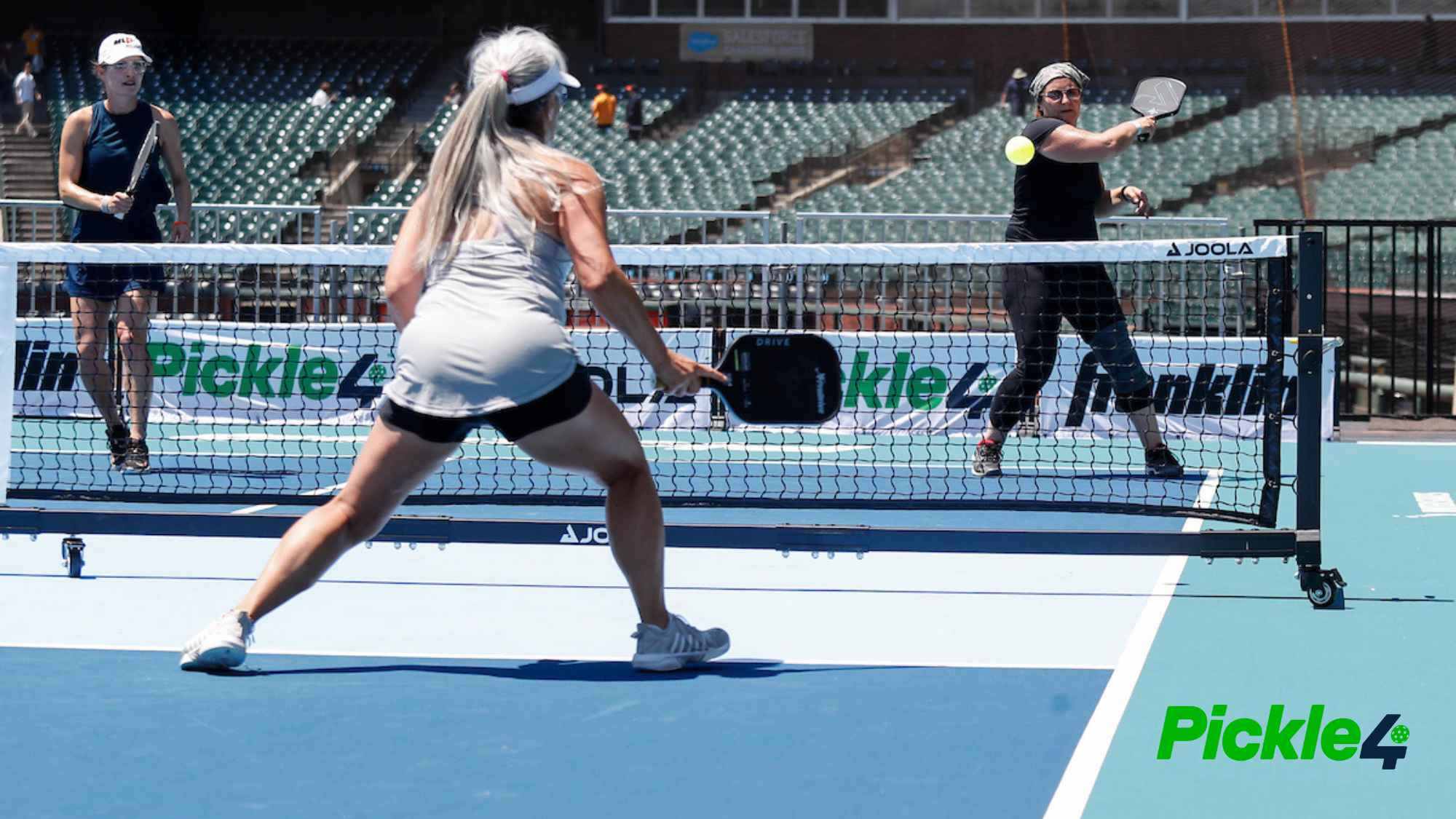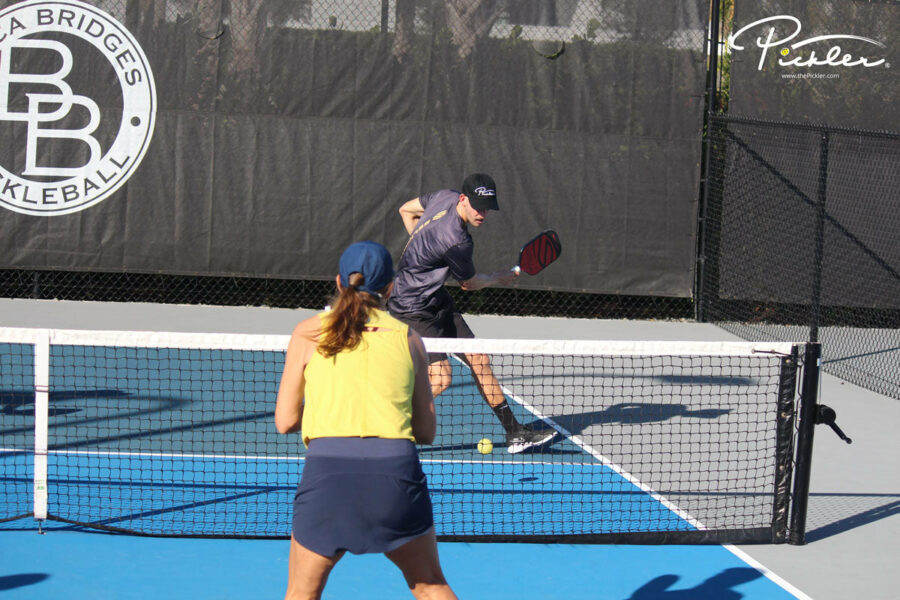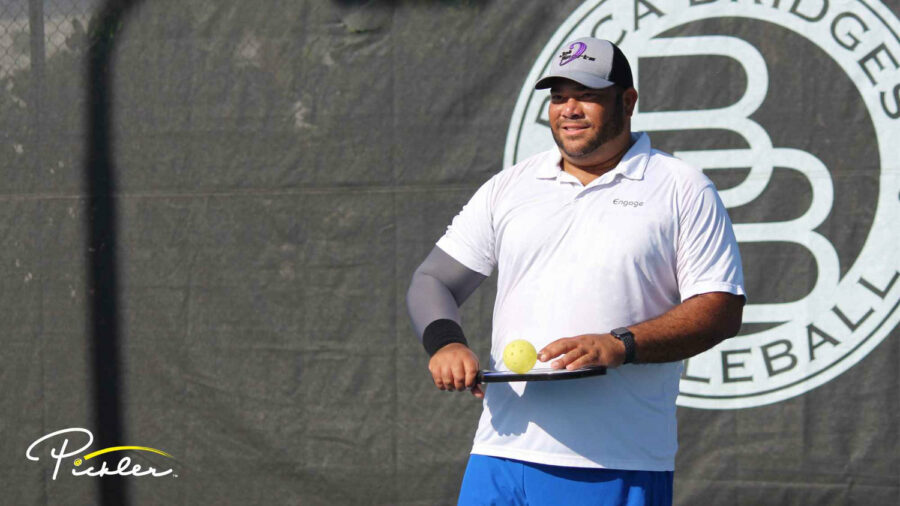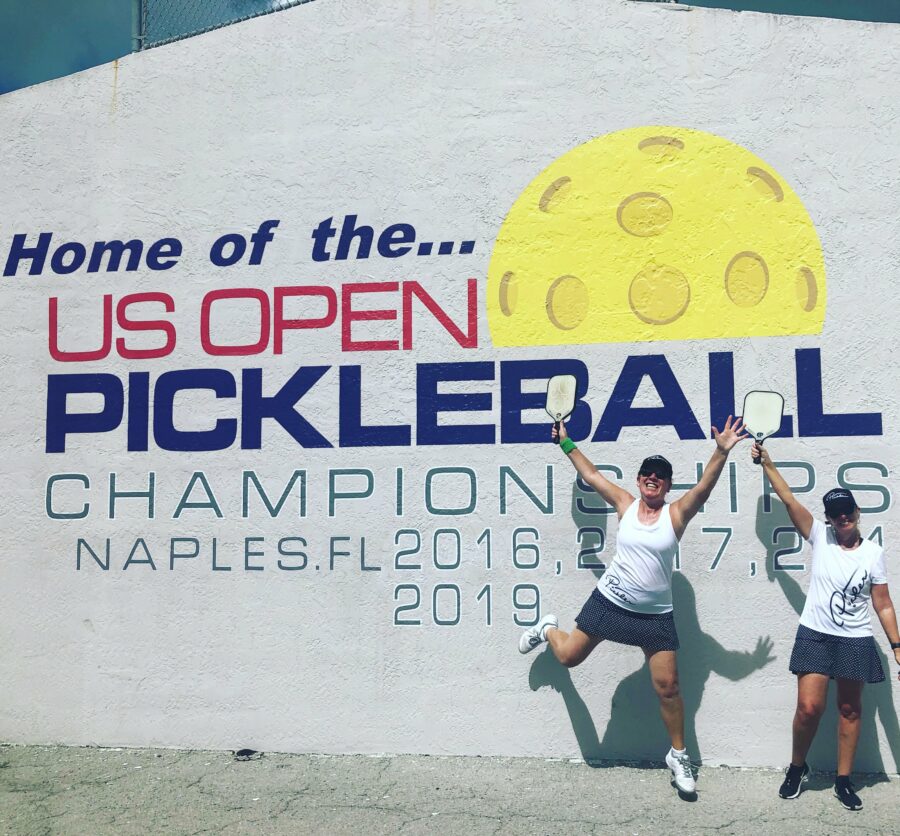In pickleball, both blocking and counterattacking are strategies typically used when you are playing at or near the Kitchen line, and your opponents are hitting a hard shot at you. However, they differ in their execution and intent.
Block:
- Execution: Blocking on the pickleball court involves keeping your pickleball paddle steady and slightly tilted backward (i.e., a slightly open paddle face (up toward the sky)) to absorb the pace and redirect the pickleball over the net. It is a controlled, short stroke (with barely any movement of the paddle) that aims to control the pickleball’s trajectory with minimal pace.
- Intent: The primary goal of a block on the pickleball court is to neutralize your opponents’ aggressive shot, especially when your opponents are hitting hard. It is a low-risk strategy, as you are not trying to add much pace or spin to the pickleball. Instead, your aim is to reset the rally and return the pickleball softly and accurately into your opponents’ side of the Kitchen, making it difficult for your opponents to attack again.
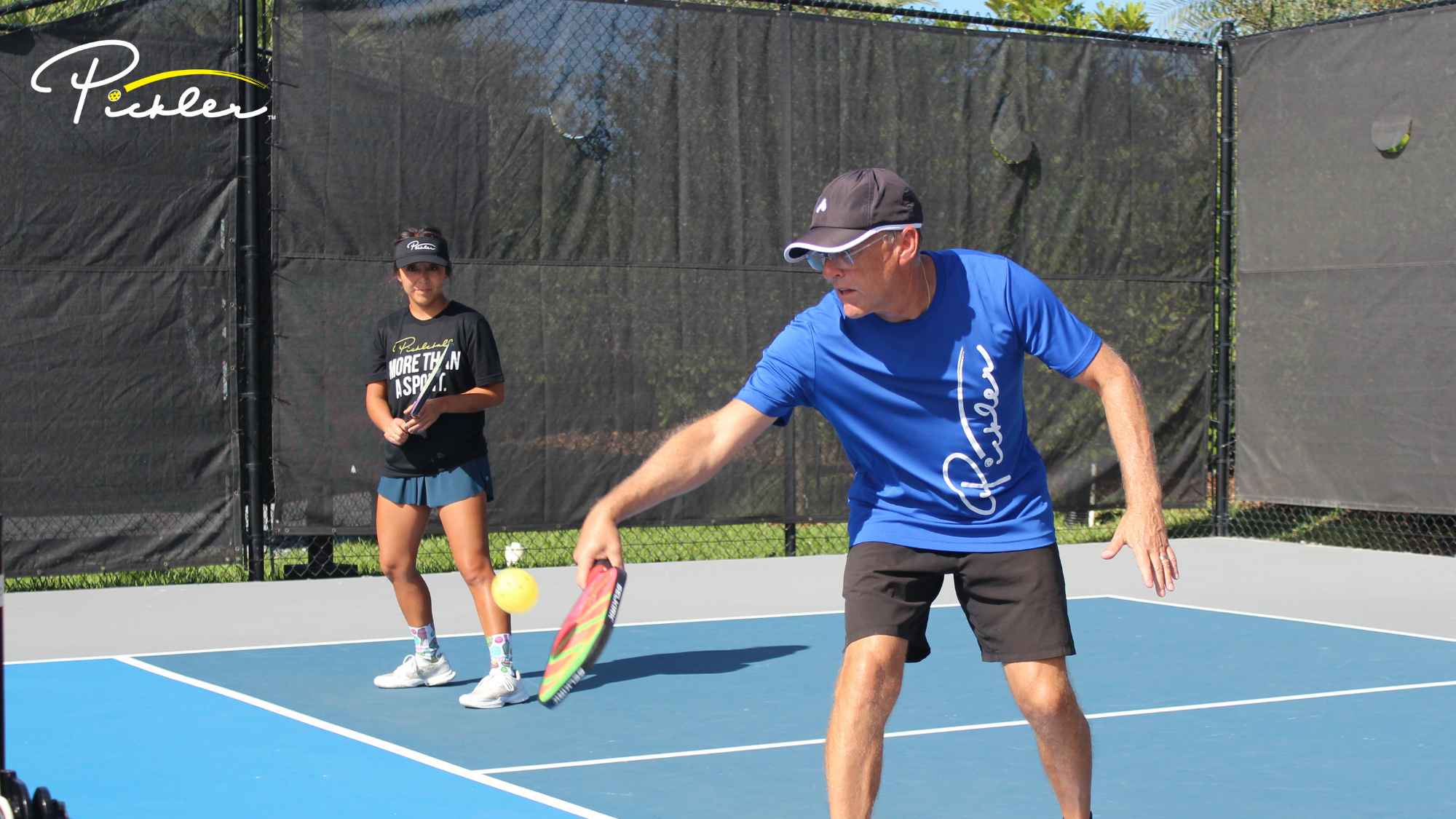
Counterattack:
- Execution: A counterattack on the pickleball court involves a more aggressive and offensive response. Instead of resetting the pickleball, you will take a hard shot at your opponents using a swinging motion. In addition to returning power with power (and using your opponents’ pace against them), your shot can include adding spin (like topspin) or an angle.
- Intent: The purpose of a counterattack on the pickleball court is to turn your opponents’ offensive shot into an opportunity for you to gain control of the point. You are looking to put pressure on your opponents, potentially forcing them into a defensive position or creating an outright winner.
In other words, there are different responses that you can have to your opponents’ attacks. You do not have to swing and power through every shot. Rather, you can be strategic about when to block and when to counterattack your opponents. This can be a difficult decision to make in real time on the pickleball court. To help you in determining when to block and when to counterattack, consider the following pickleball tips:
When to Block the Pickleball:
- Surprised – Use a block when you are surprised by your opponents’ speed-up or fast shot. If you are surprised, then your reaction time will likely be less than ideal, so consider blocking (using minimal movement) and resetting the pickleball.
- Off-Balanced – Consider blocking when you are out of position or off-balance on the pickleball court. Blocking will be a more reliable way to get the pickleball back over the net accurately.
- Deep in the Court – If you are deeper in the court—for instance, in the Transition Area—then consider blocking in order to give yourself more time to move into the Kitchen Line. If you counterattack, you will have less time to move in on the pickleball court.
- Slower Hands – If you have slower hands than your opponents, then you will likely not want to engage in any hands battles with your opponents, as you will lose the majority of those battles. Rather, consider blocking any speed-up attempt to neutralize your opponents and win the rally using strategies that highlight your strengths over your opponents’ strengths.
- Hitting Up – If you are forced to hit up on the pickleball—in other words, your opponents are able to hit their fast, aggressive shot on a downward trajectory toward your feet—use a block to reset the point. If you counter your opponents’ shot and hit up on the pickleball, you will be more likely to sail the pickleball out of bounds.
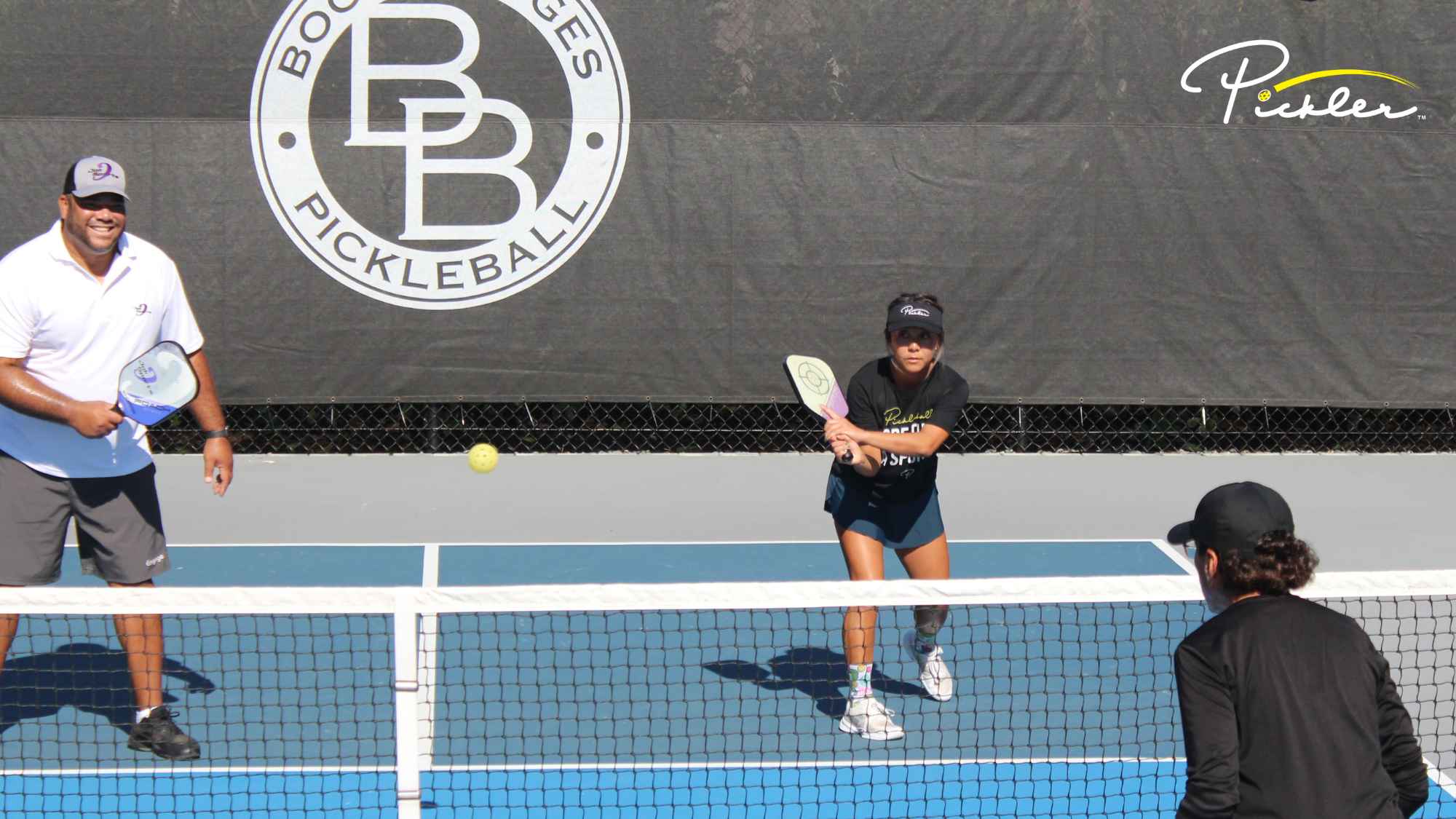
When to Counterattack Your Opponents:
- Anticipation – Use a counterattack when you are able to anticipate your opponents’ shots or have sufficient time to react (for instance, your opponents’ shot has insufficient pace or is to a favored spot).
- Strong Positioning – Consider counterattacking when you are in a good position, with your weight forward and balanced, as this allows you to generate power and accuracy.
- Control of the Kitchen – If you are at the Kitchen Line, then you will generally be in a stronger position to counterattack your opponents, as you are able to take time away from them and decrease their reaction time.
- Faster Hands – If you have faster hands than your opponents, then you will likely want to engage in hands battles with your opponents, as you will likely win the majority of those battles. So, consider counterattacking any speed-up by your opponents to engage in those fast exchanges on the pickleball court.
- Hitting Down – If you are able to hit your counterattack with downward trajectory toward your opponents’ feet, then use a counterattack. It will be difficult for your opponents to dig out your counterattack and, if they do, you will likely receive another high shot that you can again attack down at your opponents (and repeat until you eventually win the point!).
In summary, the decision to block or counterattack in pickleball depends on the pace, placement, and height of your opponents’ shot, as well as your position on the pickleball court and your skill level. Being able to use both strategies effectively will make you a more versatile and successful pickleball player.

